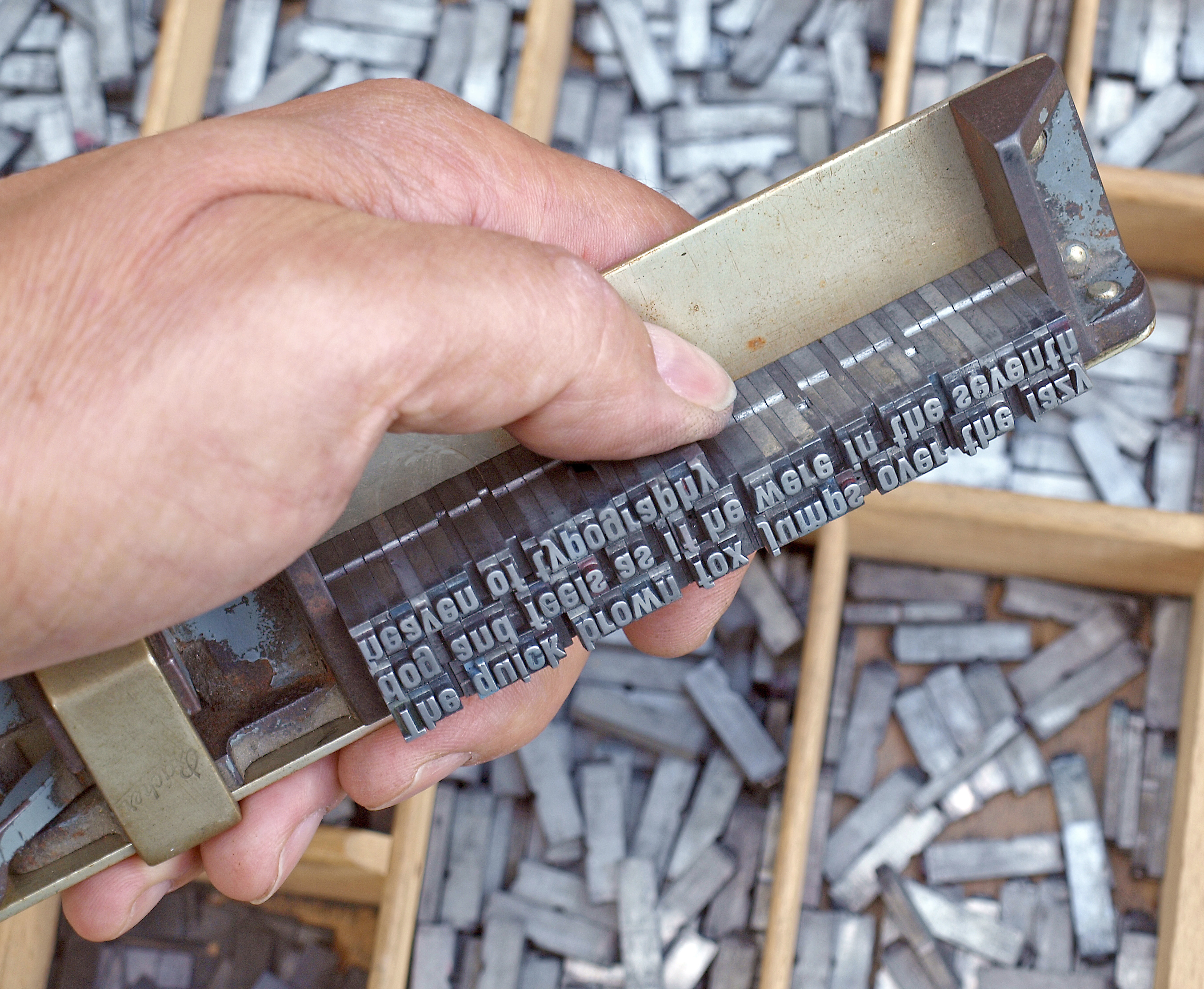Composing stick on:
[Wikipedia]
[Google]
[Amazon]
 In
In
 In
In letterpress printing
Letterpress printing is a technique of relief printing. Using a printing press, the process allows many copies to be produced by repeated direct impression of an inked, raised surface against sheets or a continuous roll of paper. A worker com ...
and typesetting
Typesetting is the composition of text by means of arranging physical ''type'' (or ''sort'') in mechanical systems or '' glyphs'' in digital systems representing '' characters'' (letters and other symbols).Dictionary.com Unabridged. Random ...
, a composing stick is a tray-like tool used to assemble pieces of metal type into words and lines, which are then transferred to a ''galley
A galley is a type of ship that is propelled mainly by oars. The galley is characterized by its long, slender hull, shallow draft, and low freeboard (clearance between sea and gunwale). Virtually all types of galleys had sails that could be u ...
'' before being locked into a ''forme'' and printed. Many composing sticks have one adjustable end, allowing the length of the lines and consequent width of the page or column to be set, with ''spaces'' and ''quadrats'' of different sizes being used to make up the exact width. Early composing sticks often had a fixed ''measure'', as did many used in setting type for newspapers, which were fixed to the width of a standard column, when newspapers were still composed by hand.
The compositor takes the pieces of type from the ''boxes'' (compartments) of the type case
A type case is a compartmentalized wooden box used to store movable type used in letterpress printing.Williams, Fred (1992). "Origin of the California Job Case". ''Type & Press'', fall 1992. http://www.apa-letterpress.com/T%20&%20P%20ARTICLES/ ...
and places them in the composing stick, working from left to right and placing the letters upside-down with the ''nick'' to the top.
Early composing sticks were made of wood, but later iron, brass, steel, aluminium, pewter and other metals were used. Wooden composing sticks continued to be made in large sizes into the nineteenth century, for setting wood letter
Wood is a porous and fibrous structural tissue found in the stems and roots of trees and other woody plants. It is an organic materiala natural composite of cellulose fibers that are strong in tension and embedded in a matrix of lignin t ...
and other large sizes of type for display. In the industrial age, composing sticks were manufactured by many companies, but notably in America by the H. B. Rouse company, which made composing sticks that were adjustable to the half pica, as well as a stick containing a micrometer that was infinitely adjustable. Some sticks were marked in agates
Agate () is a common rock formation, consisting of chalcedony and quartz as its primary components, with a wide variety of colors. Agates are primarily formed within volcanic and metamorphic rocks. The ornamental use of agate was common in Ancie ...
as well, to aid in newspaper and advertisement composition.
See also
* Stick or stickful, a unit of typesetting length based on the composing stick *Galley proof
In printing and publishing, proofs are the preliminary versions of publications meant for review by authors, editors, and proofreaders, often with extra-wide margins. Galley proofs may be uncut and unbound, or in some cases electronically tran ...
References
* Man, John ''The Gutenberg Revolution: The story of a genius that changed the world'' (c) 2002 Headline Book Publishing, a division of Hodder Headline, London. . A detailed examination of Gutenberg's life and invention interwoven with the underlying social and religious upheaval ofMedieval Europe
In the history of Europe, the Middle Ages or medieval period lasted approximately from the late 5th to the late 15th centuries, similar to the post-classical period of global history. It began with the fall of the Western Roman Empire a ...
on the eve of the Renaissance.
* ''Webster's Revised Unabridged Dictionary'' 1913.
Printing terminology
Typesetting
Typography
Tools
Letterpress printing
{{typ-stub